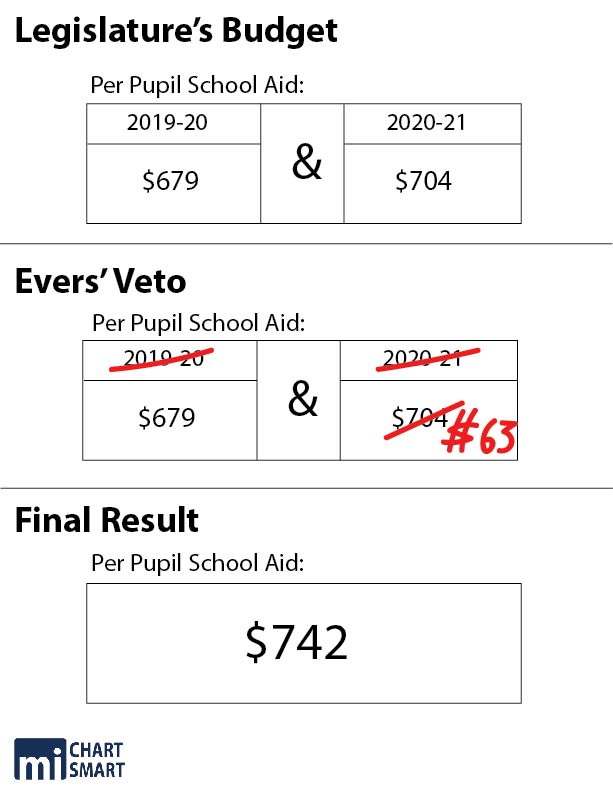
He shouldn’t have been able to do that, according to how most people understand the Wisconsin governor’s veto authority
July 16, 2019
Wisconsin governors can use their partial veto authority to remove items from a bill or to reduce fiscal amounts. They cannot use the veto to insert items into a bill or increase fiscal amounts. Yet, Governor Evers found a way to increase the per pupil aid funding by over $85 million. Here’s how he did it.
Step 1: The legislature set the new per pupil aid amounts with this language in the budget. $679 would be the amount in the first year, and $704 would be the amount in the second year.
“…$654 in the 2018−19 school year, by $679 in the subsequent school year, and by $704 in each school year thereafter.”
Step 2: Gov. Evers lowered the amount of aid in the second year. He then crossed out the language that distinguished the first and second years.
“…$654 in the 2018−19 school year, by $679 in the subsequent school year, and by $704$63 in each school year thereafter.”
Final: The per pupil aid amount then became both numbers together.
“…$654 in the 2018−19 school year, by $679 and $63 in each school year thereafter.”
Final Result: Together the two amounts equal $742, which is the new per pupil aid amount after the governor’s vetoes. This technique allowed him to raise per pupil aid by a total of $101 per student over the biennium higher than the legislature authorized. With approximately 865,000 students in the system, that increased spending by around $86.5 million.
“…$654 in the 2018−19 school year, by $742 in each school year thereafter.”
